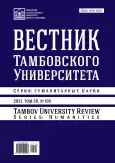Theory and practice in language immersion camps: common challenges and how to solve them
- Authors: Sushkova N.A.1, Ravich L.2
-
Affiliations:
- Lipetsk State Pedagogical P. Semenov-Tyan-Shansky University
- University of Oregon
- Issue: Vol 26, No 195 (2021)
- Pages: 139-152
- Section: ТЕОРИЯ И МЕТОДИКА ОБУЧЕНИЯ ИНОСТРАННОМУ ЯЗЫКУ В СРЕДНЕЙ ШКОЛЕ
- URL: https://journals.rcsi.science/1810-0201/article/view/298516
- DOI: https://doi.org/10.20310/1810-0201-2021-26-195-139-152
- ID: 298516
Cite item
Full Text
Abstract
The popularity of immersion programs as one of the most effective means to learn foreign languages and cultures is constantly growing. More and more children are getting involved in immersion programs in schools, language courses and summer camps. During the last fifty years both Russian and foreign scholars have been trying to establish a theoretical basis for developing communicative and intercultural competence which would inform program design and ultimately the results of such programs. We describe various aspects of creating immersion programs and to analyze their key ideas. The article draws from both authors’ lengthy experience as language immersion summer camp organizers to describe the experience of applying immersion principles in practice. We summarize more than ten years of experience and exchange visits of representatives of the two immersion camps “Forest Сamp”, Russia, and “Lesnoye Ozero”, the USA. We describe common challenges arising in the working process and suggest ways of dealing with them.
About the authors
N. A. Sushkova
Lipetsk State Pedagogical P. Semenov-Tyan-Shansky University
Email: sushkovanatalia@yandex.ru
ORCID iD: 0000-0002-7220-2029
Candidate of Pedagogy, Associate Professor of English Language Department
42 Lenin St., Lipetsk 398020, Russian FederationL. Ravich
University of Oregon
Author for correspondence.
Email: ravitch@uoregon.edu
ORCID iD: 0000-0003-4212-8718
Senior Instructor and Russian Language Programs Coordinator
1585 E 13th Ave., Eugene 97403, Oregon, United States of AmericaReferences
- Chomsky N. Syntactis Structures. Berlin, New York, De Gruyter Mouton Publ., 2002, 115 p.
- Hymes D. On communicative competence. Sociolinguistics. Harmondsworth, Penguin Publ., 1972.
- Brinton D., Snow M., Wesche M. Content-Based Second Language Instruction. New York, Newbury House Publishers, 1989, 241 p.
- Ballinger S., Lyster R., Sterzuk A., Genesee F. Context-appropriate crosslinguistic pedagogy: Considering the role of language status in immersion education. Journal of Immersion and Content-Based Language Education, 2017, no. 5 (1), pp. 30-57. https://doi.org/10.1075/jicb.5.1.02bal
- Rehorick S., Edwards V. (compilers). French Immersion: Process, Product and Perspectives. Welland, The Ca-nadian Modern Language Review Publ., 1994, 428 p.
- Robinson D.W. The cognitive, academic, and attitudinal benefits of early language learning. Critical Issues in Early Second Language Learning. Glenview, Scott Foresman Addison Wesley Publ., 1998, pp. 37-43.
- Johnson R., Swain M. Immersion Education: International Perspectives. Cambridge, Cambridge University Press, 1997, 315 p.
- Byram M. Teaching and Assessing Intercultural Communicative Competence. Clevedon, Multilingual Matters Publ., 1997, 124 p.
- Safonova V.V. Kommunikativnaya kompetentsiya: sovremennyye podkhody k mnogourovnemu opisaniyu v metodicheskikh tselyakh [Communicative Competence: Modern Approaches to Multilevel Description for Methodic Purposes]. Moscow, Evroshkola Publ., 2004, 236 p. (In Russian).
- Sysoyev P.V. Osnovnyye polozheniya kommunikativno-etnograficheskogo podkhoda k obucheniyu inostrannomu yazyku i kul’ture [The main provisions of the communicative-ethnographic approach to teaching a foreign language and culture]. Yazyk i kul’tura – Language and Culture, 2014, no. 4 (28), pp. 184-202. (In Russian).
- Harley B., Allen P., Cummins J., Swain M. (eds.). The Development of Second Language Proficiency. Cam-bridge, Cambridge University Press, 1990, 248 p.
- Gardner R., Lambert W. Attitudes and Motivation in Second Language Learning. Rowley, Newbury House Publ., 1972, 316 p.
- Dörnyei Z. The Psychology of the Language Learner: Individual Differences in Second Language Acquisition. London, Lawrence Erlbaum Publ., 2005, 282 p.
- Dörnyei Z., Muir C. Creating a motivating classroom environment. Second Handbook of English Language Teaching. New York, Springer Publ., 2019, pp. 719-736.
Supplementary files









